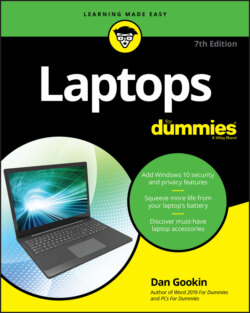Читать книгу Laptops For Dummies - Dan Gookin - Страница 16
The loveable luggables
ОглавлениеThe Osborne computer was barely portable. Face it: The thing was a suitcase! Imagine hauling the 24-pound Osborne across Chicago's O'Hare Airport. Worse: Imagine the joy expressed by your fellow seatmates as you try to wedge the thing beneath the seat in front of you.
Computer users yearned for portability. They wanted to believe the advertising images of carefree people toting the Osborne around — people with arms of equal length. But no hipster marketing term could mask the ungainly nature of the Osborne: Portable? Transportable? Wispy? Nope. Credit some wag in the computer press for dreaming up the term luggable to describe the new and popular category of portable computers ushered in by the Osborne.
FIGURE 1-1: A late-model Osborne.
Never mind its weight. Never mind that most luggable computers never ventured from the desktops they were first set up on — luggables were the best the computer industry could offer an audience wanting a portable computer.
In the end, the Osborne computer’s weight didn’t doom it. No, what killed the Osborne was that in the early 1980s the world wanted IBM PC compatibility. The Osborne lacked it. Instead, the upstart Texas company Compaq introduced luggability to the IBM world with the Compaq 1, shown in Figure 1-2.
The Compaq Portable (also called the Compaq 1), introduced in 1983 at $3,590, proved that you could have your IBM compatibility and haul it on the road with you — as long as a power socket was handy and you had good upper-body strength.
Yet the power cord can stretch only so far. It became painfully obvious that for a computer to be truly portable — as Adam Osborne intended — it would have to lose its power cord.
